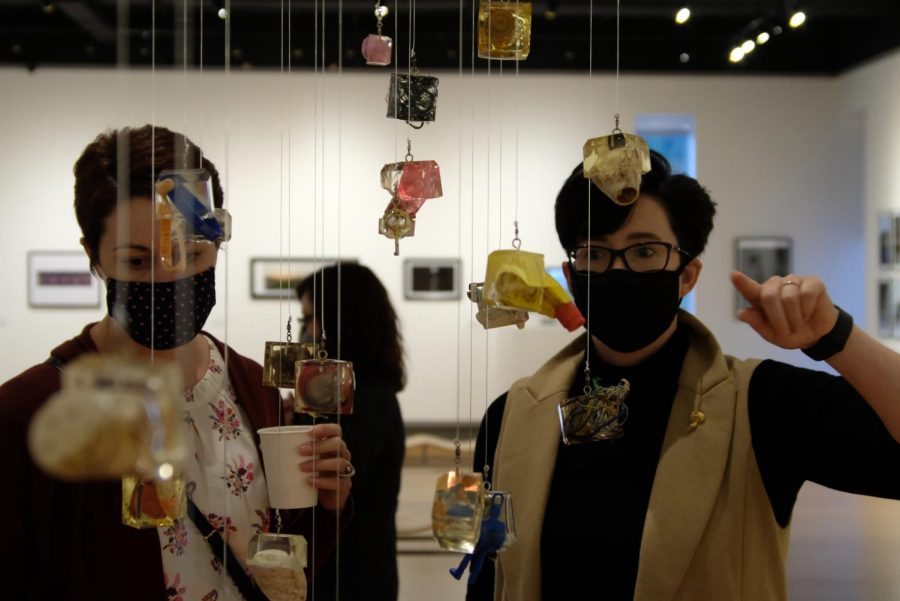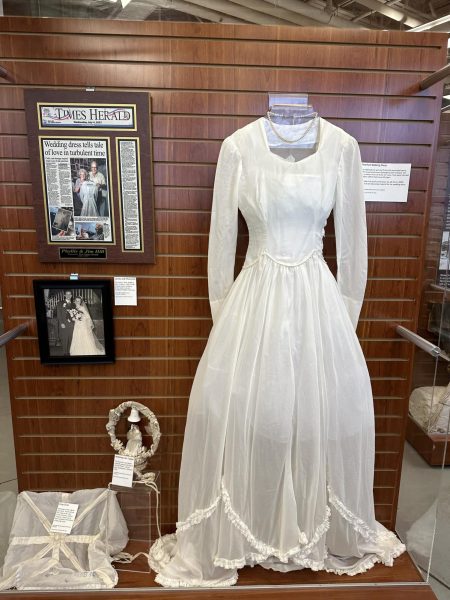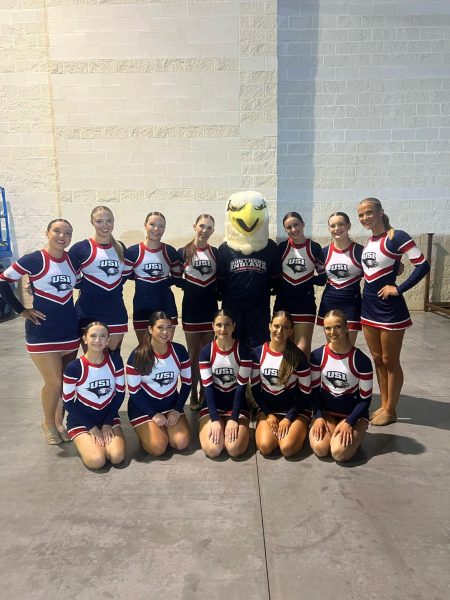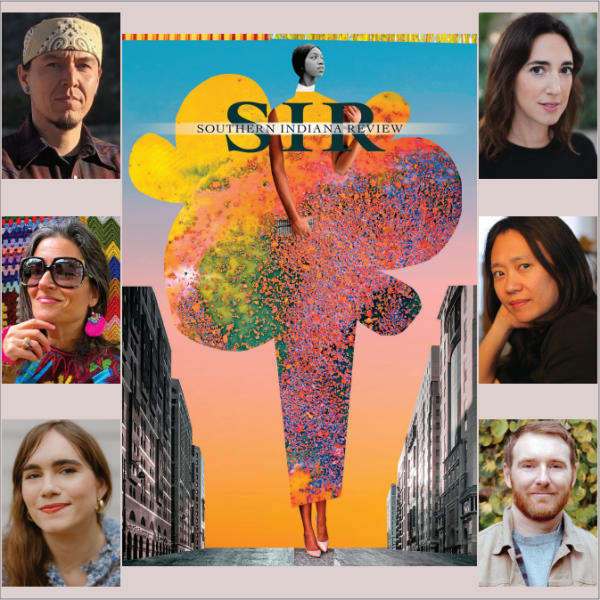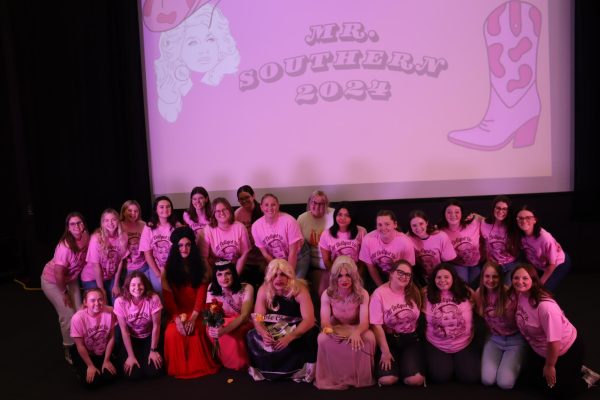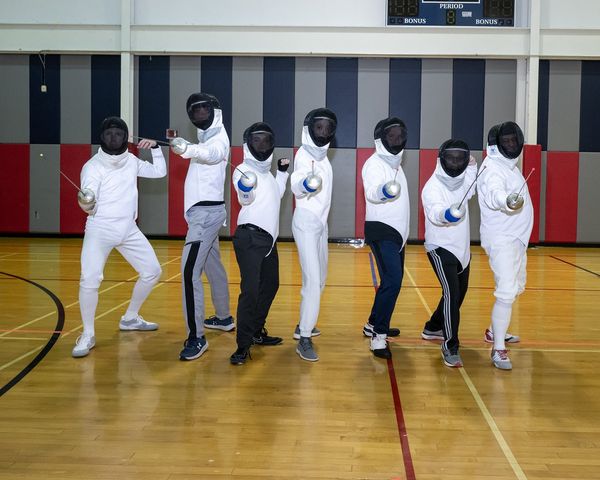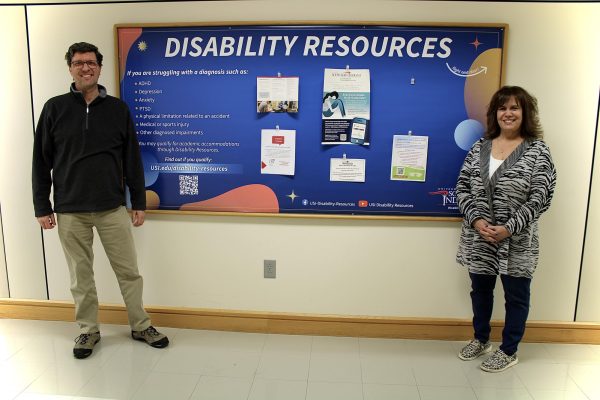Alumna talks trash and makes mushrooms sing in latest art show
Artist Kathrine Watts shows communication professor Lisa Verkamp an installation piece as part of her latest exhibition “-rhiza” Oct. 21, 2021. “-rhiza” is on display in the McCutchan Art Center from now until Dec. 10.
November 4, 2021
University alumna Katherine Watts spoke in the Performance Center Oct. 21, 2021, on her traveling art show “-rhiza,” an exhibition on the relationship between nature and humans.
“-riza” is a multimedia display of music and art made from materials found along the Ohio River. It’s now on display in the McCutchan Art Center along with exhibitions from senior seminar.
Brett Anderson, Director for the McCutchan Art Center, said that this show is an excellent example highlighting the accomplishments of university alumni.
Watts graduated from USI in 2007 and recently obtained her Masters of Fine Arts from the University of Louisville. She said she got her start as an artist at USI.
“This is where I fell in love with art,” Watts said. “I was in Art Club in high school, but it was nothing compared to an actual college that had a degree in art. It blows my mind because I came from such a small town.”
Watts credits artist and former university professor Carolyn Roth as a major inspiration for her early work. Watts took Roth’s figure drawing class when she was an undergrad and says she “took off” from there.
The show’s name “-rhiza” comes from mycorrhiza or the relationship between fungi and plants. It’s how roots from mushrooms can interact with the roots of a tree to share nutrients.
“They kind of become one entity,” Watts said. “It’s the interconnectedness of everything.”
This relationship is shown in contrast with humans’ relationship to nature in the art show. The installation pieces are made from pill bottles, rubber ducks, baby doll parts and other found items that nature has yet to reclaim.
To Watts there is something still special about these discarded items.
“I feel that they have an innate beauty in them,” she said. “They still have a story to tell.”
Her fascination for nature started at a young age being strongly influenced by her parents, both of which are fond of the outdoors. Her mother Laura gardens while her father Eric is an avid boater.
Sitting in the front row of the Performance Center, both parents smiled widely as they watched their daughter present “-rhiza” to students, faculty and friends.
After the presentation, attendees walked across campus to the McCutchan Art Center in the basement of the Liberal Arts Building where Watts demonstrated a musical phenomenon.
Mushrooms can make music through a process called bio-sonification. In this demonstration, Watts connected a device called a bio-sonification module to various mushrooms on a log provided by her father.
The device measures small electric fluctuations on the surface of living things. Whenever there is a change in conductivity the module translates it into notes, making a fascinating and unique form of music.
“-rihza” is all about connection. It’s on display from now until Dec.10.
“We’re all made of the same stuff, and we’re all in the same cyclical experience of life,” Watts said. “Interconnectedness – google that sometime.”

